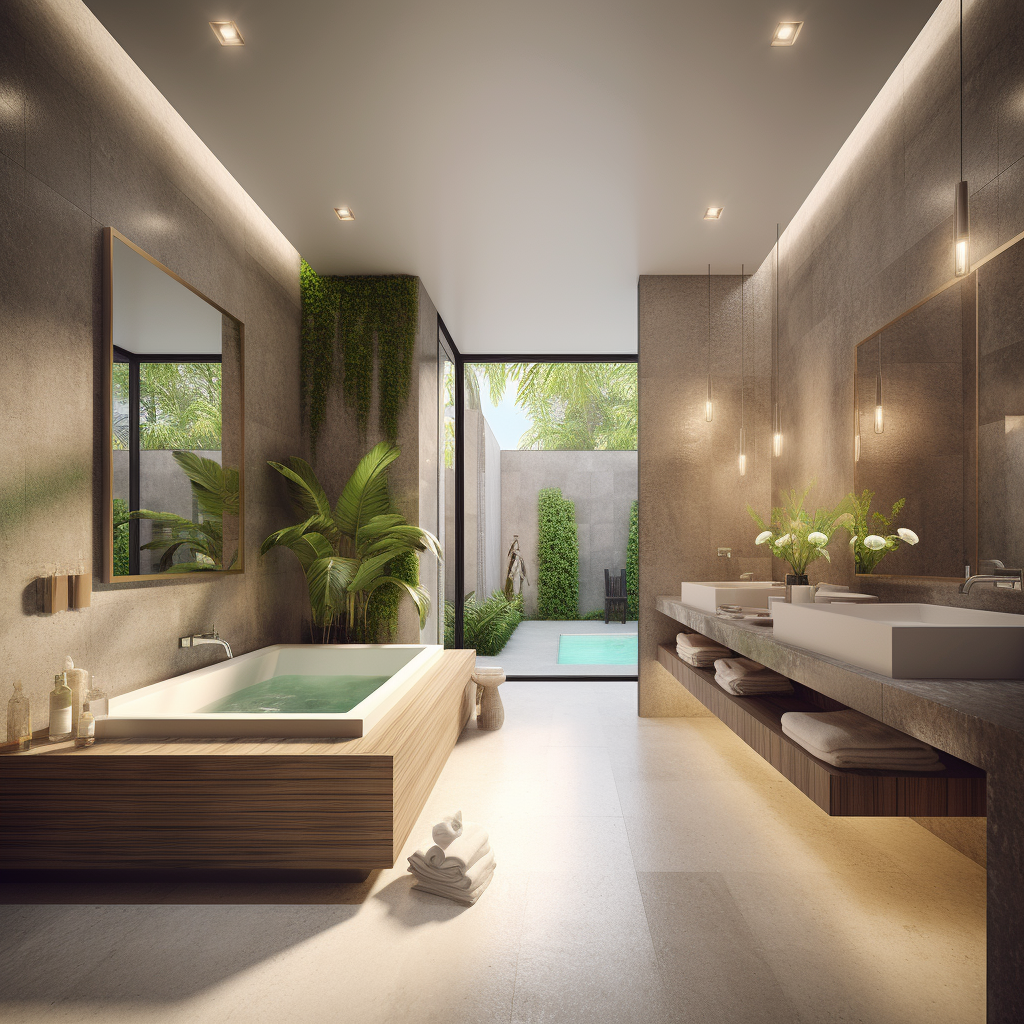Whether the buzz of AI sends a shudder down your spine or sparks inspiration for new design heights, it’s here and happening. We asked three designers—Melissa Grovenburg, Autumn Pochiro and Honey Collins—whether or not they use AI in their design practices and why.

Kick-starter
“We’ve been using several AI programs like Dall-E 2 to help with the connecting and storytelling design phase, as well as for client presentations. On the back end, AI has been great for us to develop graphics for the physical space, and on the front end, we’re using it for inspirational imagery to help us create the visuals we have in our head using very specific directives. For example, for a brunch-by-day and nightlife-after-dark venue in Chicago called Bijan’s, we used AI to develop the initial concept of Bijan as a character—he’s a pink cockatiel and international jewel thief with an attitude. AI helped bring our vision to life, then we further refined it with our own finishes using Photoshop to get it exactly where we wanted it to be. We’re enjoying AI, but we’re currently using it only [to get] a head start in bringing our vision to life. We still need to modify our creations and [put in] additional work to finish the process. ChatGPT is something we’re exploring [to] help with research and information gathering. We can use it to find the history of a building we’re working on or ask questions about specific materials we’d like to use. It doesn’t replace the work we do, but it speeds up the process.” —Melissa Grovenburg, Dunne Kozlowski, Chicago

Fashion-Forward
“I recently had the fun of [participating] in an online tutorial with Savour Partnership. We took a virtual field trip through the metaverse of Midjourney and Spatial. On Midjourney, the words you [feed] the text bot get translated into images that can be curated to [design] a space. After a quick download on technology use, creating is fast and fun. For instance, in Spatial, you can build entire homes and have your clients walk through them [using] their own avatar—think animated, colorful, even fashion-forward. Fashion houses like Gucci have been utilizing Al since 2019, and the technology has revamped its marketing. Now, if Gucci is using this technology to target luxury clients, I think, as designers, we can too. AI is very diverse as a tool, from marketing to visual components to data points. The key for my firm is to find ways to utilize the tech and build it into our current process. Like any tool, you must create a strategy around it and find a way to measure effectiveness.” —Autumn Pochiro, Autumn Dawn Design, Dublin, Ohio

Open Mind
“My approach to my business and the way I interact with my clients is very personal. However, I think it is important to recognize the potential benefits of advancements like ChatGPT and AI features—not fight them. I don’t always invite change, but it is so important in this business to be ahead of the curve and not find yourself behind it. I especially see AI affecting the e-design business. If an AI-generated system is able to search for certain products, it will become an easy way for someone to re-create a very formulaic room. In the high-design world, I still believe the creative mind of a designer will give you a room that no one else can—custom finishes, fabrics and furniture. That unique relationship creates a sense of history and soul that cannot be re-created by a computer. At least, that’s what I hope! In the end, we’ll have to strike a balance with these tools to improve productivity and translate our visions to clients.” —Honey Collins, Honey Collins Interiors, Boston
Homepage image: Autumn Pochiro designed this luxury bathroom concept using Midjourney | Courtesy of Autumn Dawn Design




























